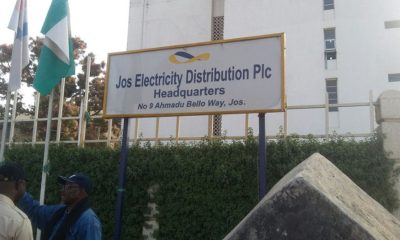Foreign
Port of Piraeus witness to China-Greece mutual learning, win-win cooperation

Port of Piraeus witness to China-Greece mutual learning, win-win cooperation
By Deng Yu
“Dad, it’s the song you always hum!” As my child shouted excitedly, a familiar melody rang in my ears.
On the TV screen, Greek singer Theodora Baka was singing the Greek folk song “The Children of Piraeus.”
“So much I’ve tried, I’ve never found a port to captivate my heart as Piraeus does,” sang Baka.
At that moment, I had a flashback to the memories of the Port of Piraeus.
The song “The Children of Piraeus” was written by Greek composer Manos Hatzidakis. It conveys the optimistic and open-minded attitude of the Greek people. In 1960, it gained worldwide acclaim when Greek actress Melina Mercouri performed it in the film “Never on Sunday,” and won the Academy Award for Best Original Song in the same year.
The first time I heard “The Children of Piraeus” was at a reception held by the Chinese Embassy in Greece in 2014. Its catchy and melodious chorus made me hum along. As a newcomer, I quickly memorized the melody.
Facing the Aegean Sea, Greece is the cradle of Western civilization. The ancient Greek culture, like a dazzling star, shines brightly in the long river of human history. Represented by epics, dramas, and philosophy, the classical culture of ancient Greece, nurtured and enriched by the Aegean Sea, has yielded fruitful intellectual achievements and become the source of Western civilization.
However, Greece in the early 21st century was plagued by various problems such as the debt crisis, a high unemployment rate, and a stagnant economy.
In 2010, China’s COSCO Shipping acquired and successfully operated the No.2 and No.3 container terminals of the Piraeus, bringing significant economic and social benefits. It was regarded by the locals as a business model.
In 2016, COSCO Shipping acquired a 67 percent stake in the port authority and officially took over in August.
I was also transferred to work at the Port of Piraeus, and got to see with my own eyes the picturesque scenes depicted in the song “The Children of Piraeus” with the sound of birds chirping and young people joyfully singing and dancing.
However, it was much more challenging to truly integrate into the Port of Piraeus than just learning a song. As a management executive, my first challenge was institutional reform and personnel adjustments.
In October 2016, I was responsible for selecting department leaders for the new structure. Among the interviewees was a woman surnamed Vassiliou, who was then the general manager of the labor department at the Port of Piraeus. She had extensive experience in human resources, and her confidence was evident on her face, making the atmosphere a bit tense at the beginning.
Suddenly, Vassiliou’s phone rang with the ringtone “The Children of Piraeus.” This little incident made her somewhat embarrassed. I smiled and said in English, ” ‘The Children of Piraeus’ is a great song, very touching.” She was surprised that I knew this song.
The song suddenly broke the ice between us, and the conversation flowed easily. Vassiliou said that this song was her favorite, just like the Port of Piraeus, where she had worked for most of her life. She also expressed some disappointment about the changes happening there.
In response to her honesty, I said, “You and my parents are close in age, and I am deeply honored and humbled to meet you. The Chinese company’s acquisition of the Port of Piraeus aims to collaborate with Greek colleagues for mutual benefit, improving the port’s facilities and services, and enhancing its competitiveness in the global market. The Port of Piraeus needs constant renewal, but it will always be the Port of Piraeus in your heart.”
The sincere beginning paves the way for a wonderful ending. After thorough communication, Vassiliou accepted the arrangement and became a department advisor as she wished. She left us with her affirmation and blessings, saying, “You are a management team worth expectation. I hope our cooperation will make the Port of Piraeus better and better.”
One year later, on her retirement day, she specifically came to bid me farewell, saying that she always remembered the little incident during the interview, our honest communication, and the constant renewal of the Port of Piraeus.
Under the management of COSCO Shipping, the container throughput of the Piraeus has increased from 880,000 twenty-foot equivalent units (TEUs) in 2010 to over 4 million TEUs in 2017, making it the fastest-growing port in container throughput worldwide. This remarkable growth led to a significant improvement in economic benefits and the Port of Piraeus has been highly praised by both the Chinese and Greek governments.
In the pleasant sunshine in June 2017, the Port of Piraeus and Shanghai Port signed a sister port agreement, further strengthening the connectivity between the Piraeus port and Chinese ports. Tassos Vamvakidis, a Greek employee, applauded the moment.
Vamvakidis has been working in shipping since 1973 and has witnessed the rise, fall, and revival of the Port of Piraeus. In an article titled “The Children of Piraeus,” he recounted his observations, feelings, and thoughts during the seven to eight years since he joined the container terminal of the Port of Piraeus managed by COSCO Shipping in 2009.
Vamvakidis once saw the predicament of the port in 2010. He could feel the fundamental change in local people’s attitude when Greeks often give a thumb-up to COSCO Shipping employees with oriental faces.
In his opinion, this change came from the Chinese company’s commitment to transformation while maintaining localization: only six or seven executives were sent from China, while the rest of the managers and employees were all Greeks. This decision quickly provided thousands of new direct job opportunities for the locals and indirectly employed tens of thousands of people.
Through sincere cooperation between employees from both countries, the Port of Piraeus has gradually become a modern, reliable, and highly productive port, gaining an increasingly higher reputation in the industry and effectively supporting the development of the local business community.
Vamvakidis, upon invitation, attended the inaugural Belt and Road Forum for International Cooperation and took the stage on China Central Television’s show “The Reader.” After reciting his story to the Chinese audience, Vamvakidis sincerely said to the camera, “I am proud to be a member of the COSCO Shipping family. As a ‘Child of Piraeus’ and a shining pearl in the Mediterranean Sea, the Port of Piraeus will continue to create new benefits and hopes for the Greek people, and renew the chapter of friendship, cooperation and development between Greece and China.”
In the summer of 2019, my family and I traveled to Switzerland. While staying at a local hotel, a familiar melody started playing. It was “The Children of Piraeus.”
I couldn’t help but hum along, and noticed the eager gaze of the hotel receptionist. After some talks, I learned that he was a native of Piraeus and had come to Switzerland for work due to employment difficulties back home.
“You’re from China, and do you know a Chinese company called COSCO Shipping? They’re doing great in the Port of Piraeus, and I have friends working there,” he asked me.
I replied that I was actually working for COSCO Shipping in Piraeus, making development plans for the port and promoting the cruise and other industries. I told him that in the future, surrounding tourism facilities such as hotels, duty-free shops, and malls would embrace significant development, and perhaps in a few years, he would return to his hometown and find a job of his choice.
In Greek, Piraeus means “the place over the passage,” and it once withstood frequent invasions from foreign naval forces. Today, the Port of Piraeus is opening its arms to welcome visitors and fully loaded container ships from all directions.
The song “The Children of Piraeus” and the China-Greece cooperation on the Port of Piraeus are reflections of the profound friendship between the two countries. Today, under the Belt and Road Initiative, Piraeus has once again become a shining pearl in the Mediterranean Sea.
“The Children of Piraeus” is a song that symbolizes the Port of Piraeus. Most importantly, it is a witness to the exchange, mutual learning, and win-win cooperation between China and Greece.
Foreign
Expressway service station in Shandong achieves carbon neutrality

By Li Rui, People’s Daily
A man surnamed Lin, driving a new energy vehicle, was on his way from Jinan to his hometown Weifang, both in east China’s Shandong province. As the battery of his vehicle ran low, he pulled up in a service station along the Qingdao–Yinchuan Expressway.
Experience told him that a service station was a place where drivers and passengers could refuel vehicles, use the bathroom, grab a drink of water and have a meal. However, he found this service station a little bit different.
The Jinan East service station was a key carbon-zero station built by Shandong Hi-Speed Company Limited. It was put into operation on July 26, 2019. During China’s just-concluded National Day holiday, the service station received an average of 13,000 vehicles and 44,000 people on a daily basis.
“How long does it take for a vehicle to get 200 kilometers of range with this ultra-fast charging pole?” Lin asked a staff member of the service station.
“One second for one kilometer of range,” the staff member replied, pointing to an advertising board above that said “Get Fully Charged over a Cup of Coffee.”
Being skeptical about it, Lin scanned a QR code on the charging pole with his phone. Then, he unwound outside his car and went to get a cup of hot water. When he came back, he found his car fully charged.
The power level of the charging pole Lin used was 600 kW, and there were also charging poles of different models and power levels available for users to choose from at the service station.
The Jinan East service station covers an area of 300 mu, or 20 hectares. With so many charging poles in service, it consumes about 6,000 kWh of electricity each day. Where does such a huge load of electricity come from?
On the canopy, rows of solar panels were neatly paved. They were a part of a renewable energy utilization system – a 3.2 MW solar farm built on side slopes of the expressway, parking lot canopies and rooftops. The system also comes with a 3.2 MWh power storage facility.
At present, the service station generates an average of over 10,000 kWh of electricity on a daily basis, far exceeding its daily power consumption volume. This saves 1,200 tons of standard coal per year. The service station also transmits extra electricity to the power grid through safe and efficient means.
At noon, the fragrance of food was floating in the corridors of the crowded comprehensive building of the service station. As one of the busiest service stations in Shandong province, the Jinan East service station welcomes over 10 million passengers each year. How does it manage the wastewater generated by such a huge crowd?
In the “backyard” of the service station, there were two white bungalows at the corner of a tree lawn. Inside them, sewage treatment facilities were running, processing wastewater and pumping it back to the water tanks, which would be used for irrigation and floor washing.
The treatment system for waste and pollutant resources successfully addresses the challenges of the huge variation between water usage peaks and lows, as well as significant greenhouse gas emissions from sewage, effectively recycling and reusing treated water.
“In the past, diesel vehicles were used for service area operations and cleaning, but now they have been replaced with electric vehicles. The catering businesses have also undergone electrification upgrades for their gas stoves, replacing them with clean energy sources wherever possible,” a staff member said.
Carbon emissions are invisible and intangible. How are they measured?
Shandong Hi-Speed Company Limited has independently developed a smart energy management system, which builds a digital twin of the station and displays all relevant data on a screen, including daily electricity generation, charging station power, peak electricity generation periods, air conditioning usage and more.
It is learned that this zero-carbon smart energy management system collects data of all indirect carbon emission sources such as photovoltaics, energy storage, micro grids, lighting, HVAC (heating, ventilation, and air conditioning), and wastewater treatment. It can automatically calculate, make decisions, and intelligently control equipment.
For example, if the air conditioning is set at 26 degrees Celsius indoors, the system can automatically shut down some air conditioners when the temperature falls below this threshold, refining energy management and enabling intelligent equipment control.
According to real-time monitoring by the system, the service station emits an average of 2,060.97 tons of carbon dioxide per year. By planting over 19,000 square meters of greenery, the service station offsets greenhouse gas emissions.
Currently, the forestry area of the service station covers 67,000 square meters, or about 33 percent of the station’s total area. Through forestry carbon sequestration, the system helps reduce an annual average of 3,410.1 tons of carbon dioxide, with a forestry carbon sequestration volume of 53.4 tons of carbon dioxide, realizing “zero-carbon” operations. The service station now has the capability for sustainable carbon neutrality.
“So far, China has built nearly 4,000 pairs of expressway service stations. If we can promote zero-carbon experiences in more service stations, it would be of great significance,” said Zhou Pengfei, deputy director of the energy and environment department of Shandong Hi-Speed Company Limited.
Foreign
Qinling Mountains better safeguarded with comprehensive digital platform

By Zhang Tie, Zhang Danhua, People’s Daily
The Qinling Mountains in northwest China’s Shaanxi province are a natural boundary between China’s north and south in terms of geology, climate, biodiversity, water systems, and soil types.
The unique geographic environment creates abundant moisture, and the rugged terrain harbors rich plant and animal resources, earning the Qinling Mountains the nickname “China’s Central Park” and establishing them as a crucial ecological barrier for the country.
In recent years, ecological protection and restoration of the Qinling Mountains has maintained a priority of Shaanxi province.
“There appears to be waste dumping in the east of Liyuanpo village in Shijing neighborhood,” an alert popped up on the screen of a digital comprehensive monitoring platform for the Qinling Mountains of Huyi district of Xi’an, capital of Shaanxi Province.
Staff member Zhao Na immediately contacted Mao Juan, a local grid officer: “Drones have captured footage, and AI analysis has detected unauthorized dumping.”
In less than an hour, Mao arrived at Liyuanpo village. Upon investigation, she learned that a villager had been renovating his house and had dumped construction waste by the roadside.
She promptly took photos for evidence, uploaded them from her phone, and informed the neighborhood office. After the area was cleared by the following morning, Mao revisited the site, verified the cleanup, and uploaded the update to the platform.
The ecological protection area of the Qinling Mountains covers six districts and counties in Xi’an, accounting for about 55 percent of the city’s total area. The rapid handling of issues like this is a result of an integrated ecological monitoring and protection system for the Qinling Mountains.
The system includes satellites that provide periodic remote sensing images, drones that conduct routine patrol flights, cameras offering real-time monitoring, and 1,240 dedicated grid officers carrying out inspections.
“With this system, countless ‘eyes’ help us protect every ridge and valley of the Qinling Mountains,” said Lei Bo, director of the technology and grid management department of the Xi’an municipal bureau of Qinling ecological environment protection.
From January to August this year, the platform autonomously identified and processed 2,480 cases involving unauthorized construction and dumping. Most cases were resolved within one to three days.
In recent years, Xi’an has continuously improved the systems and mechanisms for regular and long-term protection of the Qinling Mountains. The approach combines human surveillance with technology-based monitoring, and grid-based management with networked coordination, making protection efforts more targeted and intelligent.
Now, the entire landscape can be visualized on a single map, which shows forests, rivers, buildings, and mineral distributions, creates a digital model of the Qinling Mountains.
Each village has its own grid, with at least one grid officer, which forms a four-tiered management system from the municipal level down to villages.
Municipal- and district-level platforms, as well as several industry-specific platforms have been integrated, enabling information sharing and seamless data exchange to form a unified digital supervision system for the Qinling Mountains.
“We can detect even the smallest fire, down to a single lighter, thanks to the integration of thermal, smoke, and light sensors,” said Hua Yiping, director of the Qinling ecological protection and comprehensive law enforcement bureau of Huyi district. The digital monitoring platform now extends to multiple applications, including forest fire prevention, flood control, water quality monitoring, and geological disaster monitoring.
Currently, the populations of wild plants and animals in the Qinling Mountains are steadily increasing, with 99.3 percent of the Qinling area within Shaanxi province now rated as having an excellent ecological environment.
“In the future, we will continue to enhance the automation, intelligence, and precision of Qinling’s protection measures. We aim to refine our monitoring systems and ensure thorough, dynamic inspections and remediation,” said Li Bo, deputy director of the Xi’an municipal bureau of Qinling ecological environment protection.
Foreign
SWChina’s Guizhou builds itself into computing power base serving whole country

By Chen Junyi
At the Gui’an Supercomputing Center, which is located in Guiyang, southwest China’s Guizhou province, over 600 servers are running at full speed, supplying constant computing power to cities like Shenzhen, Guangzhou, and Wuhan, creating a vibrant ambiance with constant hum of cooling fans and flickering indicator lights.
As one of the eight major hubs of China’s national integrated computing power network, Guizhou is actively pursuing the integrated development of data storage and computing, with a particular focus on intelligent computing.
It aims to enhance the capacity in computing power supply, effectively match the supply and demand of computing power within the province and elsewhere, and better utilize computing power and localize the computing industry, so as to establish a support base serving the whole country.
Guizhou launched its plans to develop data centers ten years ago. It boasts numerous natural advantages for developing the computing industry, such as safe geological conditions, reliable power supply, and low average temperatures. China’s three telecommunication operators, namely China Telecom, China Mobile, and China Unicom, have all set up data centers here, making it the first province in China to host data centers of all the three.
After a decade of development, Guizhou is currently home to 47 data centers, either under construction or in operation, including 25 super-large and large data centers, most of which are located in the Gui’an New Area.
The Gui’an New Area is known for its flat terrain and an annual average temperature of 15 degrees Celsius. The region enjoys 99.5 percent of days with good air quality throughout the year, thereby serving as a natural air conditioner and oxygen bar.
The power usage effectiveness (PUE)of data centers in the region, a metric for energy efficiency, is lower than 1.2, which is at the forefront of all green data centers across the country. It is also one of the areas in China where data centers boast the lowest energy consumption and the longest equipment lifespan.
“As the carrier of computing power, data centers are equipped to support high-performance application scenarios by leveraging advanced computational capabilities and large-scale data processing power through the use of various hardware components such as servers and graphics cards,” said Peng Benqian, head of the Gui’an Supercomputing Center and director of the technology research and development department of Gui’an New Area Science and Technology Innovation Industries Development Co., Ltd., the company that runs the center.
In the past, most data centers in Guizhou were primarily focused on storage. With the rapid development of artificial intelligence (AI), Guizhou is advancing intelligent computing, which forms the basis of AI development. The data centers are rapidly transforming from mere “storage centers” to integrated “storage and computing ones.”
The Gui’an Supercomputing Center, the first of its kind in Guizhou, was put into operation at the end of 2020. “We have more than 600 servers, and the peak computing power has reached 130 petaflops,” Peng said.
“It would take nearly 600 years to create special effects rendering for a 3D animated film with a regular computer. However, the whole process can be completed within 3 months at our center,” he said.
In addition to locally built computing power centers, top internet companies such as Huawei, Tencent, and NetEase have established superlarge computing centers and intelligent computing centers in Guizhou. Besides, many banks have set up their financial data centers in the province.
Guizhou has become one of the regions in China with the strongest intelligent computing capabilities. By the end of July 2024, its computing power had reached 40.55 Eflops (a measurement unit used to determine a computer’s speed), with intelligent computing power amounting to 37.578 Eflops, accounting for over 90 percent.
Just like other commodities, computing power cannot be on a perfect supply-demand balance. Idle computing resources will enter a public computing resource pool and be scheduled by the Guizhou branch of China’s national integrated computing power network to efficiently connect the resource side and the demand side.
The transmission and trading of computing power rely on network infrastructure. Guizhou has established direct connections with 38 cities across China, including Beijing, Shanghai, Shenzhen, and Guangzhou.The computing power can meet the huge demand of the “East data, west computing”project, a key part of China’s digital infrastructure which aims to coordinate the computing capabilities of the country’s eastern regions, where the need for computing is high, with inland western regions like Guizhou, where abundant renewable resources are optimal for building data centers, according to Zhang Jie, head of the business department of Gui’an New Area Data Service Technology Co., Ltd.
Meanwhile, Guizhou is leveraging its computing power to drive industrial development and extend the industrial chain. With the support of computing power, many local companies have begun to explore new opportunities.
Guizhou Tuzhi Information Technology Co., Ltd. is a technology company specializing in geospatial big data application and development and a professional provider of real-time spatial-temporal information services integrating air, space, and ground data. With over 8 years of experience, the company has witnessed the evolution of Guizhou’s big data industry.
“The ecosystem of the big data industry in Guizhou is getting better and better, with refined computing power support, industry applications and data transactions. We have seen increasing productivity and expanding business scope,” Huang said.
-

 Politics12 hours ago
Politics12 hours agoGuber Poll: Forum Backs Hon. Umeoji As Anambra’s Best Option
-

 Politics18 hours ago
Politics18 hours agoPresidency Assures: No Leadership Void as Tinubu, Shettima Remain Engaged Abroad
-

 Business18 hours ago
Business18 hours agoFuel Price Hike: FG Maintains Routine Engagement with Organised Labour
-

 Politics17 hours ago
Politics17 hours ago“Give Tinubu 40 Years, He Won’t Go Anywhere” – Adebayo
-

 News17 hours ago
News17 hours agoJos DisCo to Launch Feeders Management System and Bilateral Arrangements
-

 News17 hours ago
News17 hours agoBorno: Governor Zulum Praises NCAA DG Najomo for Enhancing Aviation Safety
-

 News13 hours ago
News13 hours agoBOWFT: Edo First Lady, Obaseki, Rallies Wives of Governors to Address Teenage Pregnancy and Abortion
-

 Entertainment17 hours ago
Entertainment17 hours ago“No Breathing Space” – Temi Otedola Takes Center Stage with Stunning New Photos







